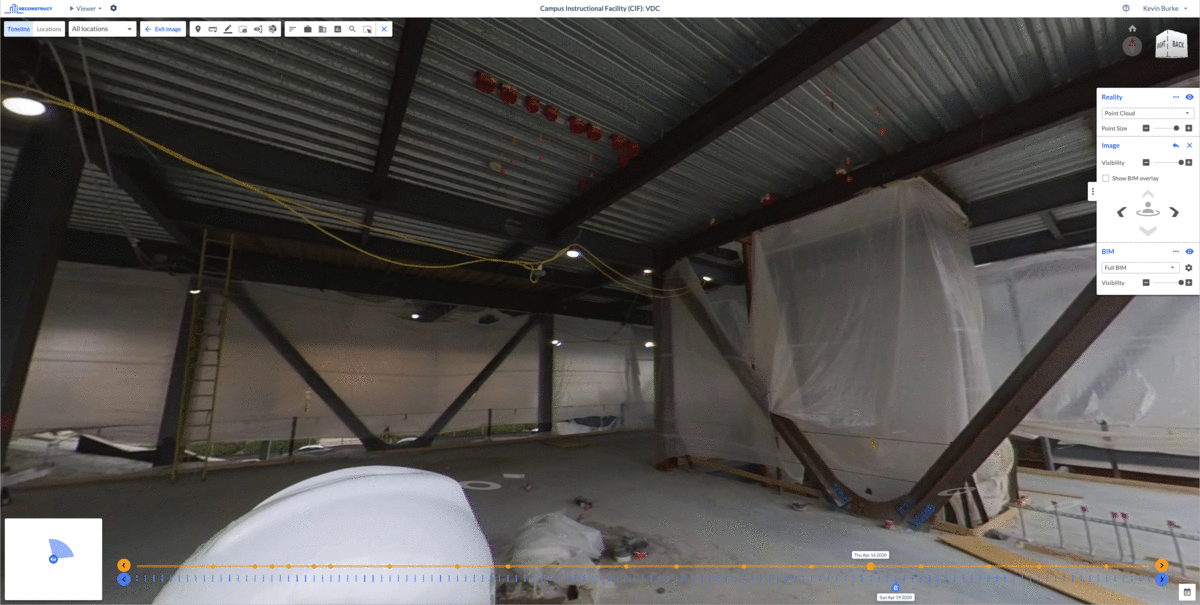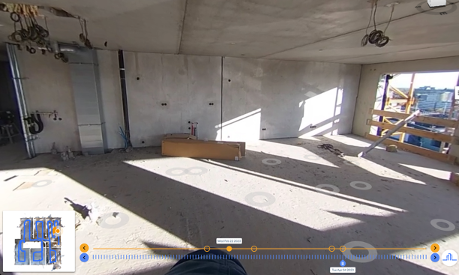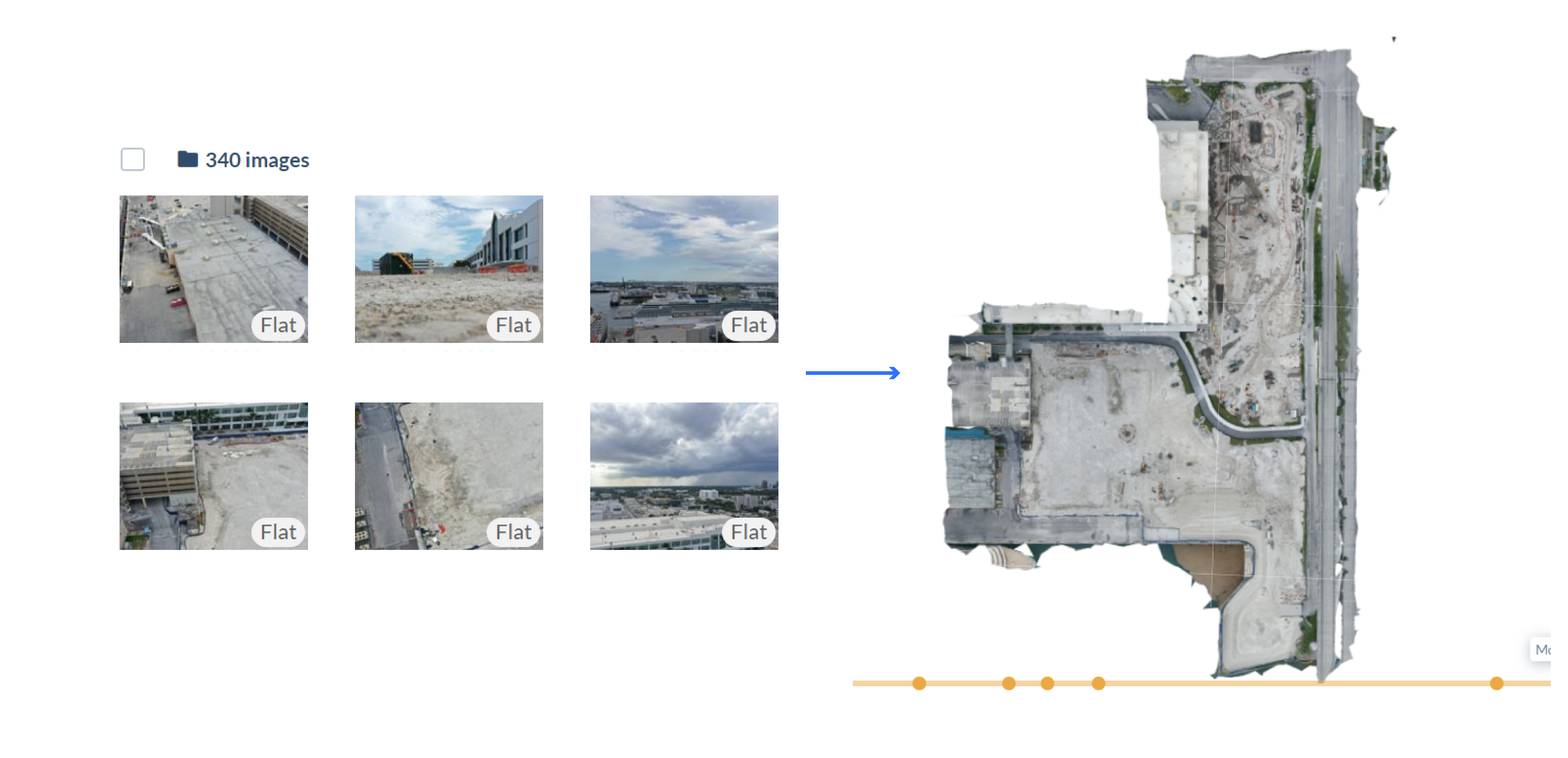When it comes to reality capture for construction, inspection, and engineering stakeholders, it's no secret that reality mapping technology has only gotten better year after year. After all, creating a “digital twin” of a job site used to be reserved for as-built documentation captured via highly accurate but expensive and time-consuming laser scanner devices.
Today, organizations of every shape and size—with both big and small budgets—can reap the benefits of reality capture without relying on laser scanners. This is, in large part, due to market improvements in reality mapping and photogrammetry software that allow stakeholders to use everyday devices such as 360 cameras and smartphones to capture footage of the job site.
Additionally, there’s another reason reality mapping for construction, inspection, and engineering stakeholders has become easier, more intuitive, more affordable, and more immersive than ever: Now, stakeholders can blend reality capture data from all sorts of devices and hardware to create a single source of project truth.
In this article, we will focus on how a smartphone, in particular, is the perfect complement to a blended reality capture strategy for frequent and remote construction progress monitoring, construction quality control, and more.
What are the benefits of a smartphone for construction reality capture?
First and foremost, the most significant benefit of a smartphone is that virtually everyone on your job site is going to have one on hand. This is instant democratization and allows each field team member to contribute to your job site’s “digital twin,” whether that means snapping images every day or just capturing a few photos when a special installation is complete.
Related: Smartphones for 3D Reality Mapping and Construction Reality Capture
While 360 cameras are now very common on job sites, virtually no scenario exists where every employee would carry one around. Capturing job site footage with a smartphone enables 100% of the people on-site to participate in reality capture. And since Reconstruct, for example, offers unlimited users, it's that easy to absorb footage captured by any contributor at any time and blend it into the digital twin.
Smartphones are also the perfect device for capturing high-resolution images of complex installations up close. While a 360 camera is ideal for capturing immersive and panoramic views of the job site, a smartphone is ideal for details.
That means work on utilities, behind-the-wall installations, and mechanical, plumbing, and electrical (MPE) work should be captured using a smartphone. For example, if a trade has installed HVAC equipment, snapping footage of this work using an iPhone will provide a much more detailed and focused view of that piece of equipment than a 360-degree camera ever could.
In other words, a smartphone allows stakeholders to focus on a specific part of the project and capture it with remarkable detail. This is useful in many scenarios, especially when capturing complex installations before they are covered in concrete or otherwise sealed.
By performing smartphone-enabled reality capture of these installations and then feeding them to a photogrammetry engine, stakeholders can archive all of the project's most complex components in immense detail and then refer back to them long after they become “invisible.”
How easy is it to blend reality capture footage from smartphones and other devices?
One of the features that makes Reconstruct’s reality mapping software unique is its ability to automatically blend footage from various devices into one single source of project truth. This means that regardless of when images and videos were captured or what device they were captured on, Reconstruct’s photogrammetry engine is smart enough to determine where those images belong in relation to all other footage, in space, and over time.
The end result is a true digital twin for construction that's as accurate and immersive as an in-person walkthrough. Moreover, because Reconstruct is a true Time Machine for Construction™, this digital twin can be rewinded to any date or time to reveal construction as it existed in the past. This can save organizations huge amounts of time and money by allowing them to swiftly answer questions and plan for repairs and renovations without the cost and delay of demolition.
Organizations can also quickly turn old images and videos captured on devices such as smartphones and fold those into that digital twin. For example, suppose dozens of stakeholders had piecemeal videos and pictures of a job site completed years ago. In that case, it’s never too late for all of that footage to be transformed into a timestamped digital twin via Reconstruct. Best of all, that footage can come from different devices, including drones, laser scanners, smartphones, and 360 cameras.
How affordable is smartphone capture for reality mapping?
Typically, reality capture performed using smartphones is the least expensive option for organizations. After all, virtually everyone already has a smartphone. This means that all trades can participate in reality mapping and construction progress monitoring simply by snapping photos and uploading them to the reality mapping engine or by submitting them to the right stakeholders.
Moreover, using a smartphone for construction reality capture requires virtually no training. It's as fast as snapping a photo, and anyone can do it. This means organizations can reduce reliance on experts for frequent construction progress monitoring.
What are the benefits of using a digital twin for construction as a single source of project truth?
One of the main reasons people use software like Reconstruct is to try to see everything that’s happening on a job site simultaneously because it is so, so easy to miss something. And that one thing that’s missed, whatever it is, will cause delays and lead to additional costs. As a result, it's essential that stakeholders see everything all in one place and holistically, too. With a digital twin, it’s easy to see all the data, drawings, maps, schedules, and BIM all in the same viewer. As a result, stakeholders can manage the project better and understand what they need to do next—all without unnecessary confusion, costs, or delays.
About Reconstruct
Reconstruct has set the gold standard for blended digital twins for construction, inspection, and engineering stakeholders. Because Reconstruct has been engineered to generate digital twins using virtually any footage—including smartphone footage and footage captured years ago—it's never been easier to create a virtual duplication of your job site.
To learn more about our photogrammetry software and to see your own project in Reconstruct, contact us for a personalized demo.


.png)

